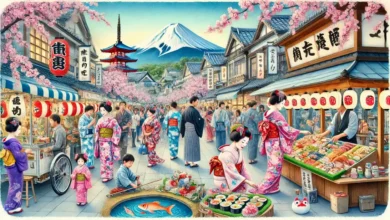Japanese Sitting Positions: Traditional Ways of Sitting
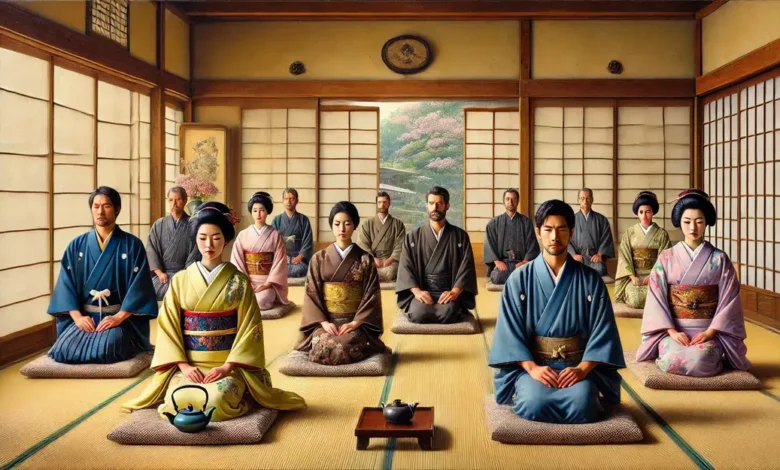
Japanese sitting positions hold a significant place in the nation’s cultural etiquette, reflecting centuries of tradition and social norms. Whether participating in a tea ceremony, attending a formal event, or simply enjoying a meal at a traditional low table, understanding these positions is crucial. Different sitting styles, such as the formal seiza or the relaxed agura, convey varying levels of respect and formality.
Each position has its own context and purpose, deeply rooted in Japanese history and daily life. By learning about Japanese sitting positions, you can gain a deeper appreciation for Japan’s rich cultural heritage and enhance your interactions within this fascinating society.
Seiza: The Formal Sitting Position
“Seiza” is a traditional Japanese sitting position. The word “seiza” means “correct sitting” in Japanese. To sit in seiza, you start by kneeling on the floor. Then, you fold your legs underneath your body, so that your bottom rests on your heels. Your toes should be pointed backward, and your back should be straight.
Seiza is a very formal way to sit, often used during traditional Japanese events like tea ceremonies or martial arts practices. In these settings, sitting in seiza shows respect.
While many consider seiza respectful, its discomfort can make it impractical for everyone. In modern settings, people sometimes switch to a more comfortable position after showing initial respect by sitting in seiza.
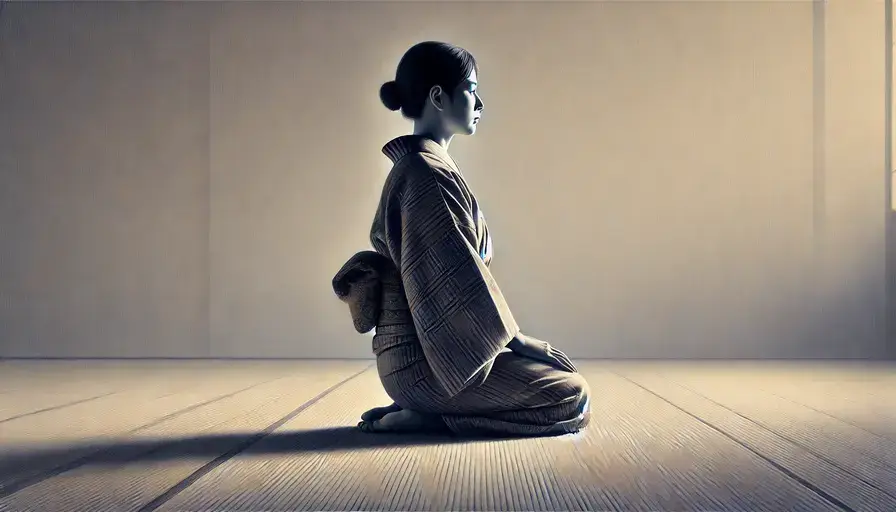
Agura: The Cross-Legged Position
“Agura” is another traditional way of sitting in Japan. The word “agura” means ‘foreign/barbarian sitting’ in Japanese. When you sit in agura, you sit cross-legged. This means you bend your knees and cross your legs in front of you. Your bottom rests on the floor, or sometimes on a cushion.
Agura is a more relaxed and informal way of sitting compared to seiza. It’s often used when people are sitting around a low table. However, it’s considered impolite to sit in agura in the presence of a superior or elders, unless they say it’s okay. Also, it’s generally considered not ladylike for women to sit in agura if they are wearing skirts or certain types of traditional clothing, like the kimono.
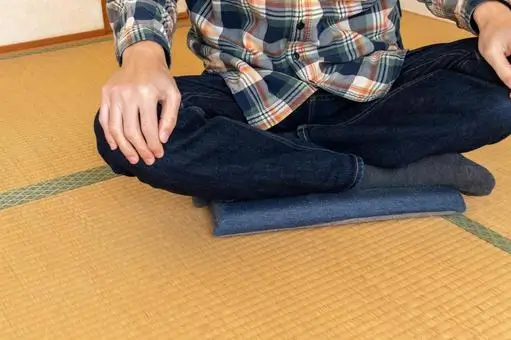
Wariza: The Split-Leg Position
Wariza involves sitting with your legs bent to one side. This position is a compromise between seiza and agura, offering more comfort than seiza while still maintaining a level of formality. Women sometimes use Wariza during traditional events or when wearing kimono, as it is easier on the legs and allows for better movement of the kimono.
To sit in wariza:
- Start in a seiza position.
- Shift your weight to one side and bend your legs to the opposite side.
- Keep your back straight and hands resting on your lap.
Wariza provides a balance between formality and comfort, making it suitable for semi-formal occasions.

Tatehiza: The Ready Position
Tatehiza is a way of sitting that samurai used to do. You sit with one knee up and the other leg bent under you. This way, if a samurai needed to stand up quickly, they could! Even though people don’t usually sit like this today, it’s still taught in martial arts and other traditional Japanese practices.
To sit in tatehiza:
- Start in a seiza position.
- Lift one knee up, keeping the other leg bent beneath you.
- Rest your arms on your raised knee or lap.
Tatehiza symbolizes readiness and alertness, reflecting the samurai spirit.
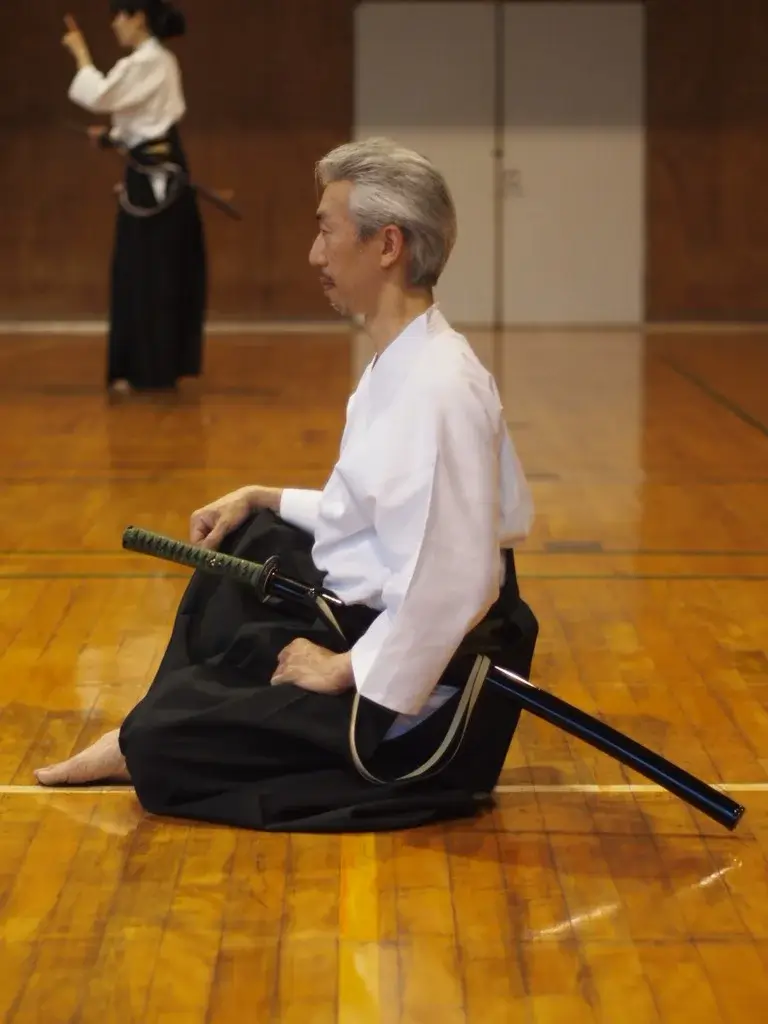
Yokozuwari: The Side-Sitting Position
Yokozuwari is a way of sitting where you fold your legs to one side. It’s a bit like wariza, but in this case, both legs are on the same side. This way of sitting is often used by women, especially when they are wearing a kimono. It helps them move in a smooth and elegant way.
To sit in yokozuwari:
- Sit on the floor with your legs folded to one side.
- Keep your back straight and hands resting on your lap.
Yokozuwari is both elegant and practical, making it suitable for traditional and formal occasions.
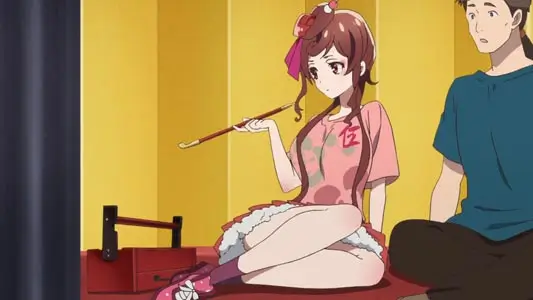
Floor sitting styles
Here are some common ways people sit in Japan:
- Seiza: You kneel and rest your body on your heels. Your feet are flat on the floor and your back is straight.
- Kiza: From the seiza position, you lift your heels and balance on your toes and knees.
- Wariza or Kamei: From seiza, you spread your legs to the left and right, making an “M” shape.
- Agura: You cross your legs in front of you. If your legs are relaxed, this is called anza.
- Kekkafuza: You cross your legs and put your heels on the opposite thighs. This is how people sit when they meditate.
- Sonkyo: You squat and balance on your toes. If your heels touch the floor, it’s also called the “toilet squat posture.”
- Tatehiza: You raise one knee with your foot forward and bend the other knee with your foot behind you.
- Taiiku-zuwari or Sinkaku-zuwari: You sit with your back bent to the floor and raise your knees. Your hands are on your knees or around your legs.
You can see these sitting styles in everyday life in Japan. For example, in schools, kids often sit in the taiiku-zuwari style in the schoolyard or gym.
In sumo wrestling and other martial arts, sonkyo is a way of sitting that shows gratitude. Sumo wrestlers use this posture when they get ready for a match.
Sonkyo was also a popular way of sitting among samurai during the Edo period. Today, people also refer to this way of sitting as yankii zuwari – the sitting style of the Yankees (Japanese gangsters).
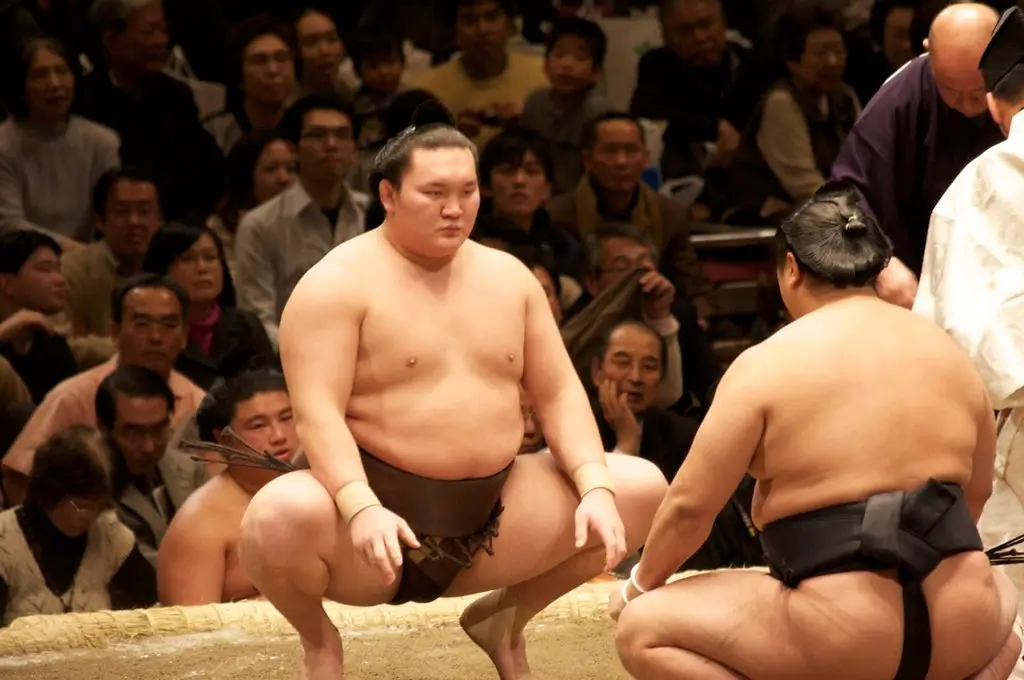
Casual Sitting: Modern Adaptations
In modern Japan, people have adapted their ways of sitting to match their lifestyle. While traditional sitting positions like “seiza”, “agura”, and “wariza” are still used, many people now also use Western-style furniture like chairs and sofas. This change has happened because of the influence of Western culture.
But even with these changes, the Japanese still value their floor culture. Many homes in Japan have rooms with tatami mats, which are traditional Japanese mats made from rice straw. People sit on these mats or on cushions called zabuton. Sitting on the floor allows them to feel more connected to their surroundings.




